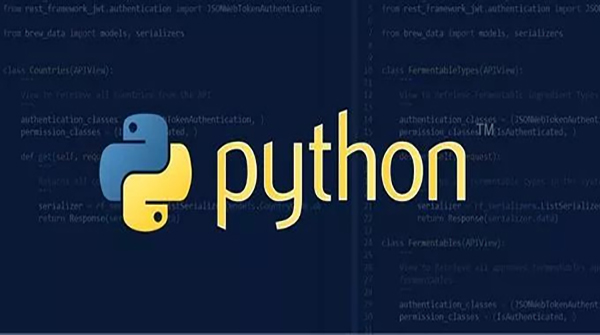
最近在部署前端项目的时候,需要先将前端项目压缩包通过堡垒机上传到应用服务器的 /tmp 目录下,然后进入应用服务器中,使用 mv 命令将压缩文件移动到 Nginx 项目设定目录,最后使用 unzip 命令解压文件,以此完成项目的部署。
仔细分析,大部分操作都是重复性的动作,人工去完成这些操作会大大降低工作效率。
本篇文章将介绍如何利用 Python 监控文件夹,以此辅助完成服务的部署动作。
1. 准备
这里要介绍一个 Python 依赖库「 watchdog 」
它可用于监控某个文件目录下的文件变化,包含:删除、修改、新增等操作,每一个操作都会回调一个事件函数,我们可以在内部编写自定义的逻辑,以此满足我们的需求。
# 安装依赖包
pip3 install watchdog- 1.
- 2.
项目地址:
https://pypi.org/project/watchdog/
2. 实战一下
首先,我们需要创建一个监听器,用于监听文件夹目录:
from watchdog.observers import Observer
...
# 创建一个监听器,用来监听文件夹目录
observer = Observer()
...- 1.
- 2.
- 3.
- 4.
- 5.
然后,创建 2 个事件处理对象。
PS:该对象继承于「 FileSystemEventHandler 」类。
它们分别用于监听「 /tmp 」目录、「 /home/project/frontend 」目录,假设事件对象被命名为 obj1、obj2
obj1 负责监听 /tmp 目录,重写「 新建或修改 」事件方法,完成压缩文件的移动操作:
from watchdog.events import *
import ntpath
import shutil
import zipfile
def get_filename(filepath):
"""
根据文件夹目录,获取文件名称(待后缀)
:param filepath:
:return:
"""
return ntpath.basename(filepath)
class FileMoveHandler(FileSystemEventHandler):
def __init__(self):
FileSystemEventHandler.__init__(self)
...
# 文件新建
def on_created(self, event):
# 新建文件夹
if event.is_directory:
# print("directory created:{0}".format(event.src_path))
pass
# 新建文件
else:
# print("file created:{0}".format(event.src_path))
filename = get_filename(event.src_path)
# 如果属于前端的4个项目压缩包,开始文件夹的操作
if filename in watch_tags:
self.start(filename)
...
def on_modified(self, event):
if event.is_directory:
# print("directory modified:{0}".format(event.src_path))
pass
else:
# print("file modified:{0}".format(event.src_path))
filename = get_filename(event.src_path)
if filename in watch_tags:
self.start(filename)
...
def start(self, filename):
"""
文件处理逻辑
:param filename:
:return:
"""
try:
# 文件名不带后缀
filename_without_suffix = filename.split(".")[0]
# 源文件路径(压缩包文件)
source_file_path = watch_folder + filename
# 目标文件路径(压缩包文件)
target_file_path = target_folder + filename
# 目标项目文件夹(目标项目)
target_project_path = target_folder + filename_without_suffix
# 1、复制文件到目标文件夹
print(f"拷贝源目录{source_file_path},目标文件夹:{target_folder}")
# 删除目标文件夹下的压缩文件
if os.path.exists(target_file_path):
os.remove(target_file_path)
# 移动文件到目标文件夹中
shutil.move(source_file_path, target_folder)
# 2、清空目标文件夹中内的所有文件夹(如果存在)
# 如果不存在,新建一个文件夹
if os.path.exists(target_project_path):
shutil.rmtree(target_project_path, ignore_errors=True)
print(f"项目{filename_without_suffix}移动成功!")
except Exception as e:
print("部署失败,错误原因:", str(e.args))- 1.
- 2.
- 3.
- 4.
- 5.
- 6.
- 7.
- 8.
- 9.
- 10.
- 11.
- 12.
- 13.
- 14.
- 15.
- 16.
- 17.
- 18.
- 19.
- 20.
- 21.
- 22.
- 23.
- 24.
- 25.
- 26.
- 27.
- 28.
- 29.
- 30.
- 31.
- 32.
- 33.
- 34.
- 35.
- 36.
- 37.
- 38.
- 39.
- 40.
- 41.
- 42.
- 43.
- 44.
- 45.
- 46.
- 47.
- 48.
- 49.
- 50.
- 51.
- 52.
- 53.
- 54.
- 55.
- 56.
- 57.
- 58.
- 59.
- 60.
- 61.
- 62.
- 63.
- 64.
- 65.
- 66.
- 67.
- 68.
obj2 负责监听 /home/project/frontend 目录,同样重写「 新建或修改 」事件方法,完成压缩文件的解压动作:
...
def start(self, filename):
# 文件名不带后缀
filename_without_suffix = filename.split(".")[0]
# 目标文件路径(压缩包文件)
target_file_path = target_folder + filename
# 目标项目文件夹(目标项目)
target_project_path = target_folder + filename_without_suffix
r = zipfile.is_zipfile(target_file_path)
if r:
fz = zipfile.ZipFile(target_file_path, 'r')
for file in fz.namelist():
fz.extract(file, target_folder)
else:
print('这不是一个正常的zip压缩包!')
...- 1.
- 2.
- 3.
- 4.
- 5.
- 6.
- 7.
- 8.
- 9.
- 10.
- 11.
- 12.
- 13.
- 14.
- 15.
- 16.
接着,通过监听器启动上面两个事件的监听任务:
import time
...
if __name__ == "__main__":
# 待监听的文件夹目录
watch_folder = "/tmp/"
# 项目目标文件夹目录
target_folder = "/home/project/frontend/"
# 监听文件夹名称,即:项目压缩包名称
watch_tags = ['proj1.zip', 'proj2.zip', 'proj3.zip', 'proj4.zip']
# 创建一个监听器,用来监听文件夹目录
observer = Observer()
# 创建两个事件处理对象
move_handler = FileMoveHandler()
unzip_handler = FileUnzipHandler()
# 启动监控任务
# 参数分别是:观察者、监听目录、是否监听子目录
observer.schedule(move_handler, watch_folder, True)
observer.schedule(unzip_handler, target_folder, True)
observer.start()
try:
while True:
time.sleep(1)
except KeyboardInterrupt:
observer.stop()
observer.join()
...- 1.
- 2.
- 3.
- 4.
- 5.
- 6.
- 7.
- 8.
- 9.
- 10.
- 11.
- 12.
- 13.
- 14.
- 15.
- 16.
- 17.
- 18.
- 19.
- 20.
- 21.
- 22.
- 23.
- 24.
- 25.
- 26.
最后,我们在服务器上通过「 nohup 」命令,让文件监听程序在后台运行即可。
# 在后台运行
# 项目文件:watch_folder.py
# 日志文件:watch_folder.log
nohup python3 -u watch_folder.py > watch_folder.log 2>&1 &
# 查看日志:
cat watch_folder.log- 1.
- 2.
- 3.
- 4.
- 5.
- 6.
3. 总结
通过上面的操作,每次我通过堡垒机将前端 zip 压缩项目文件上传到应用服务器的 /tmp 目录下,程序会自动进行后面的操作,自动完成应用部署。
我已经将文中源码上传到后台,回复关键字「 watchdog 」获取完整的源码。
如果你觉得文章还不错,请大家 点赞、分享、因为这将是我持续输出更多优质文章的最强动力!